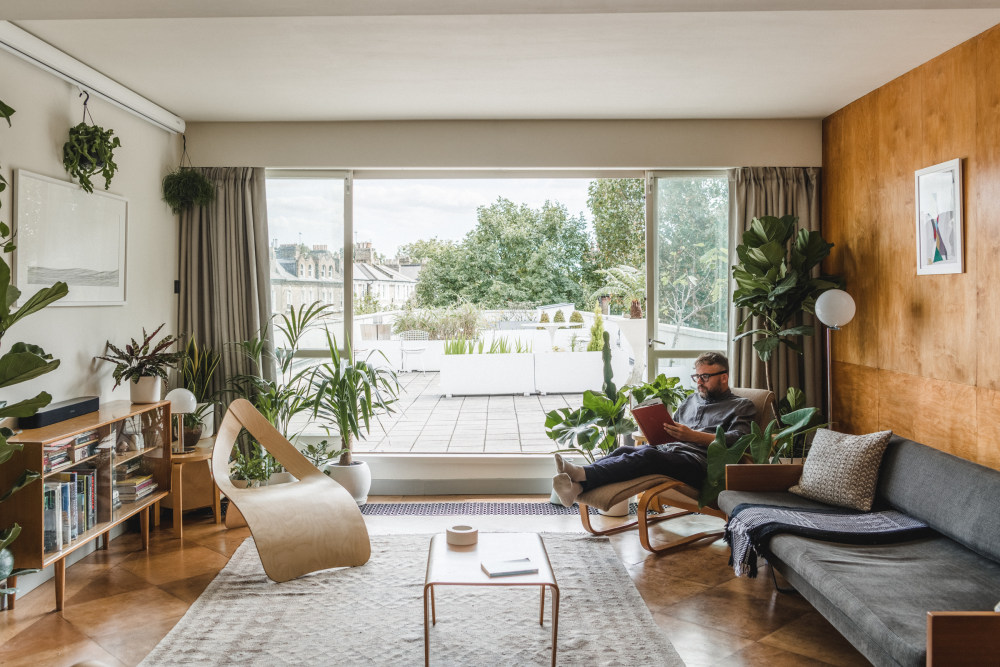
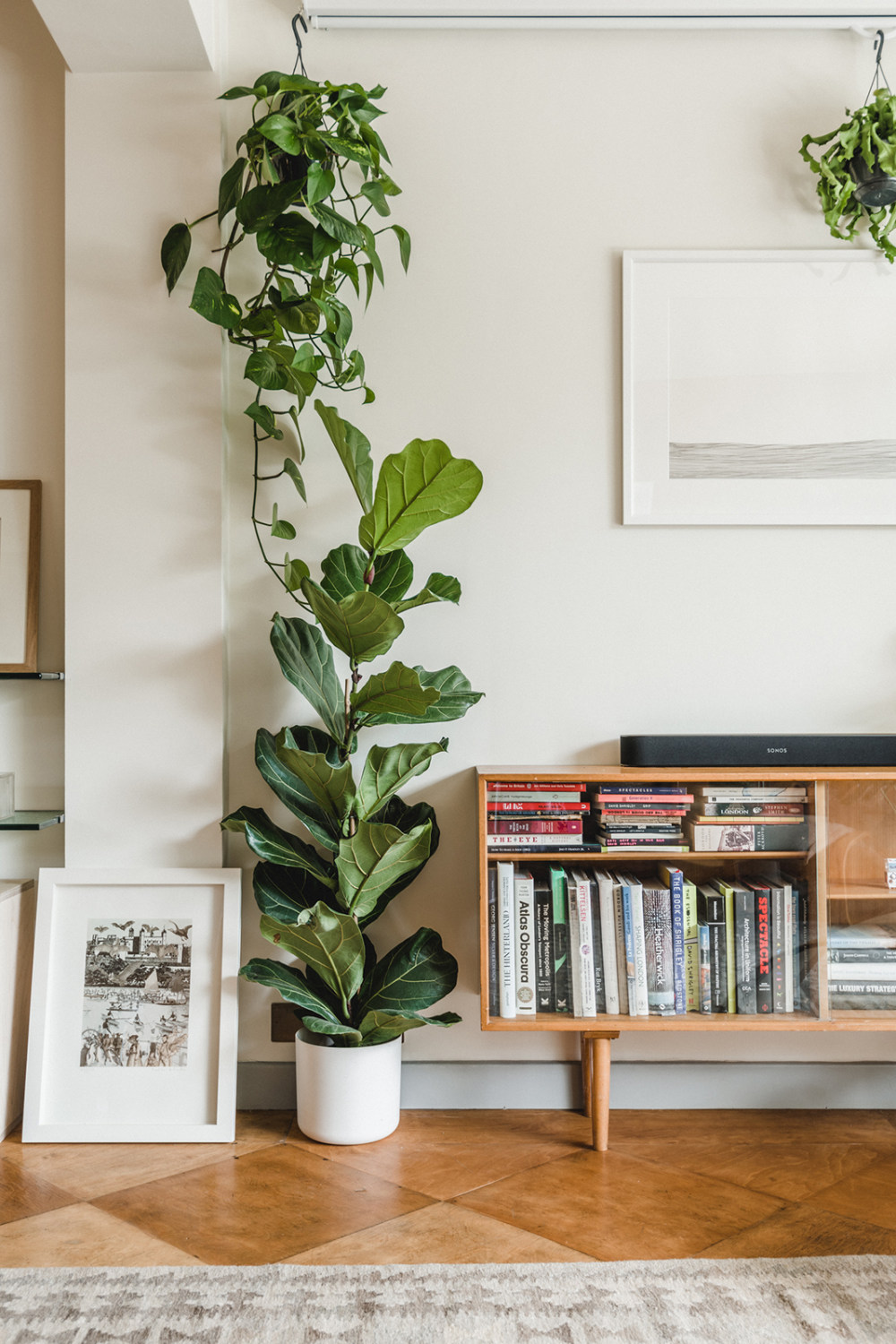
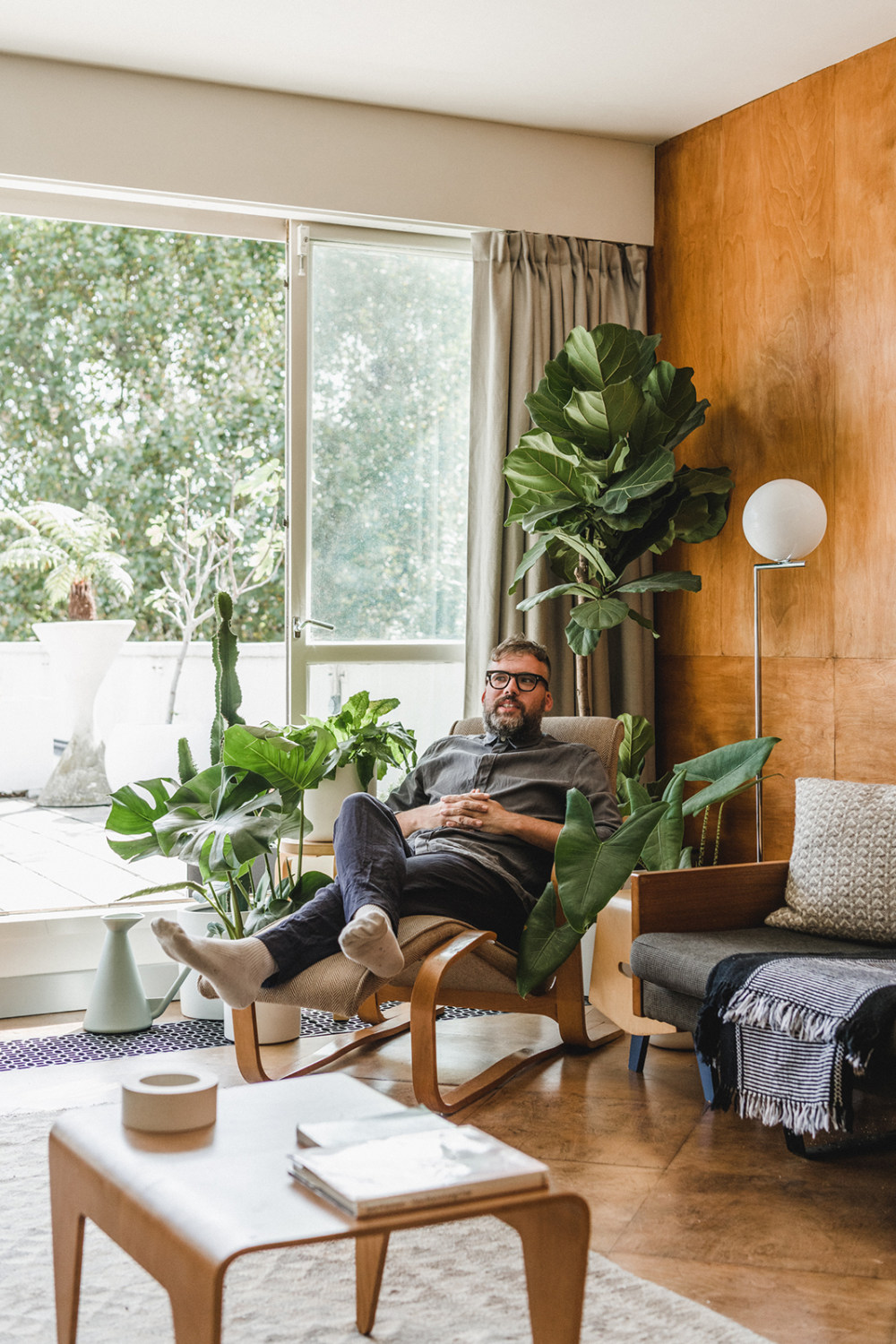
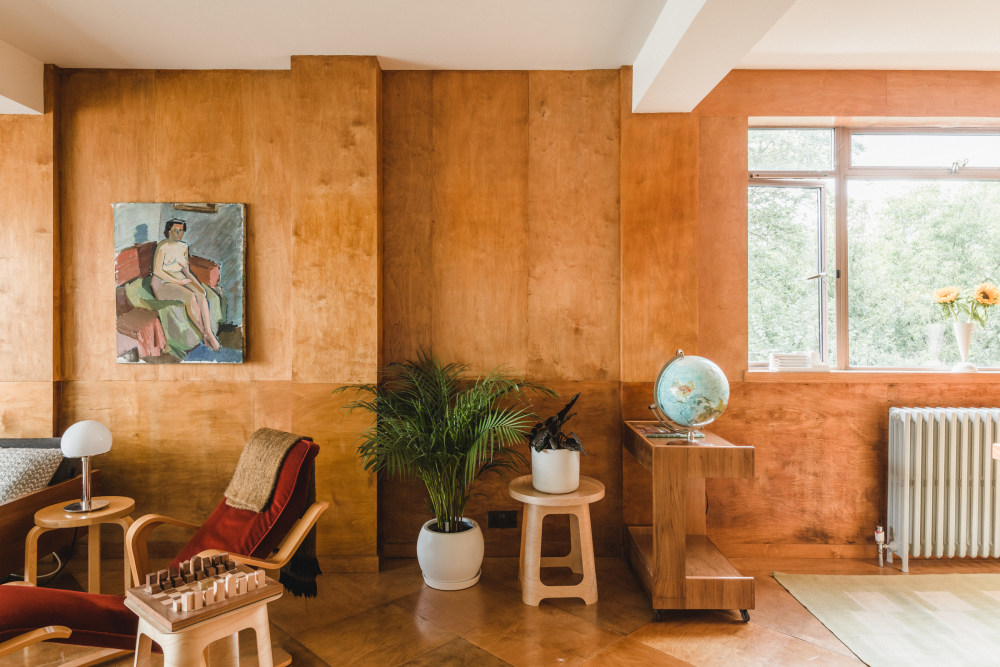
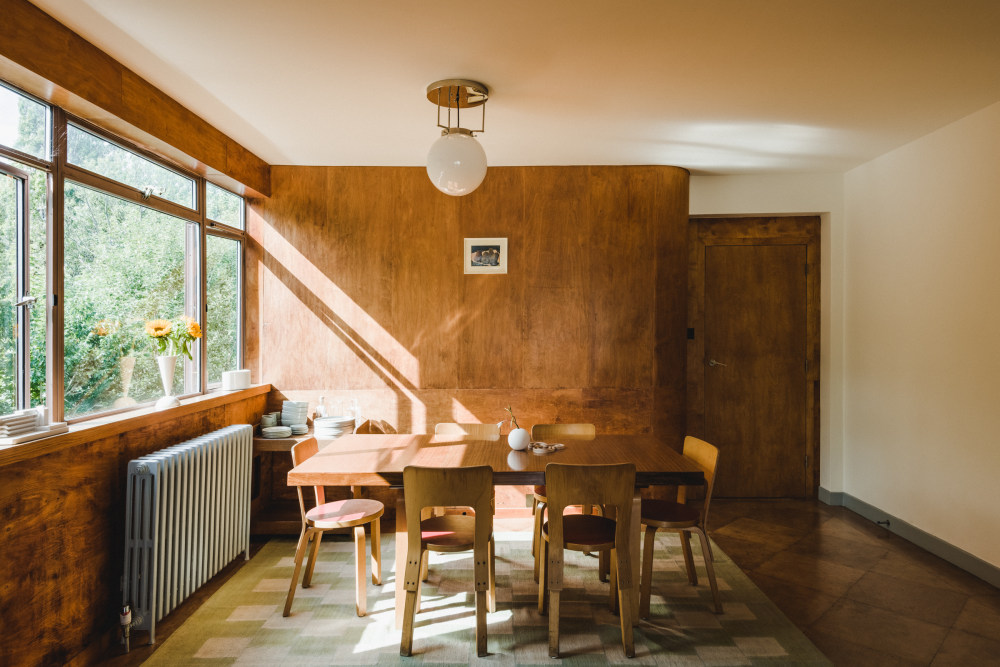
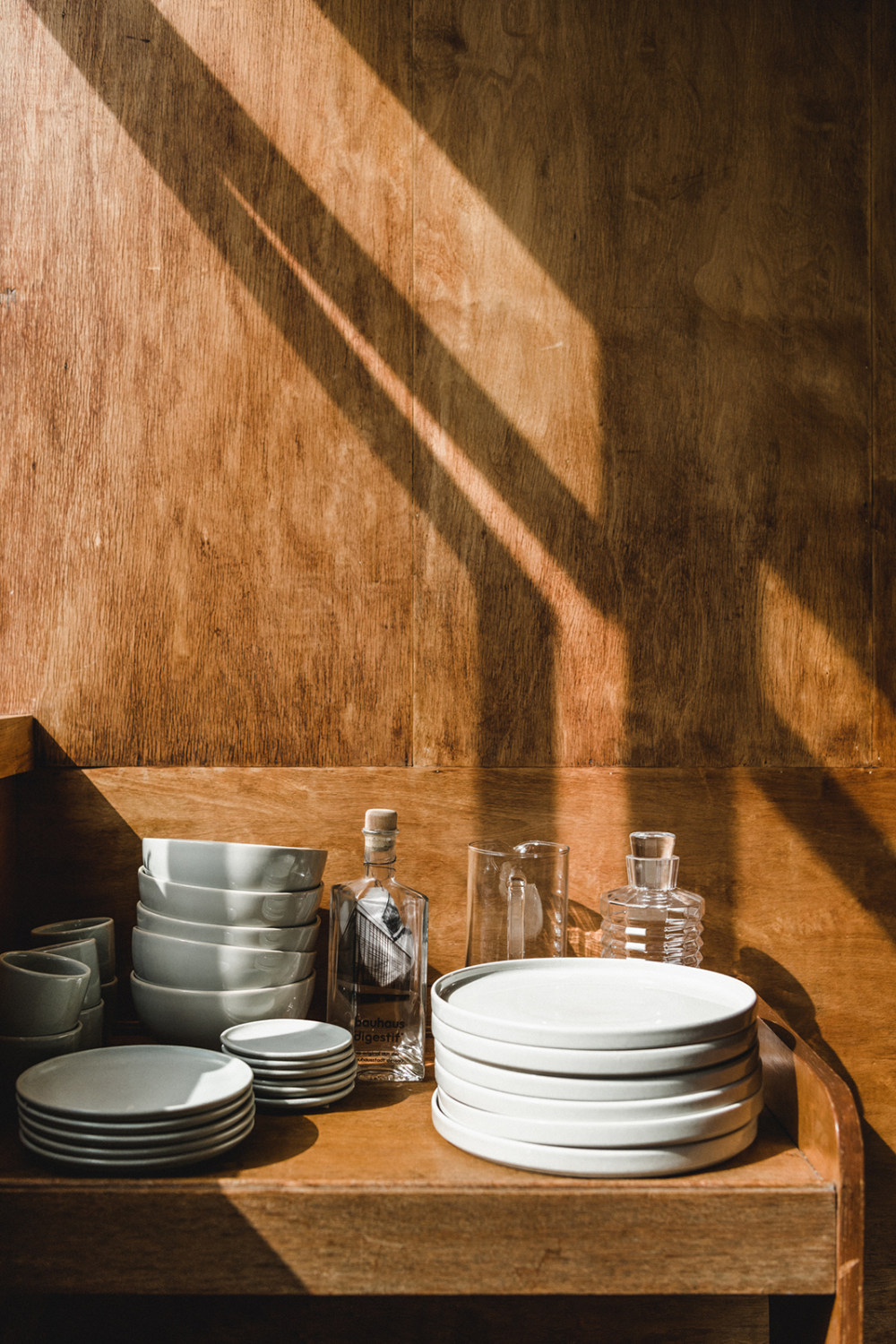
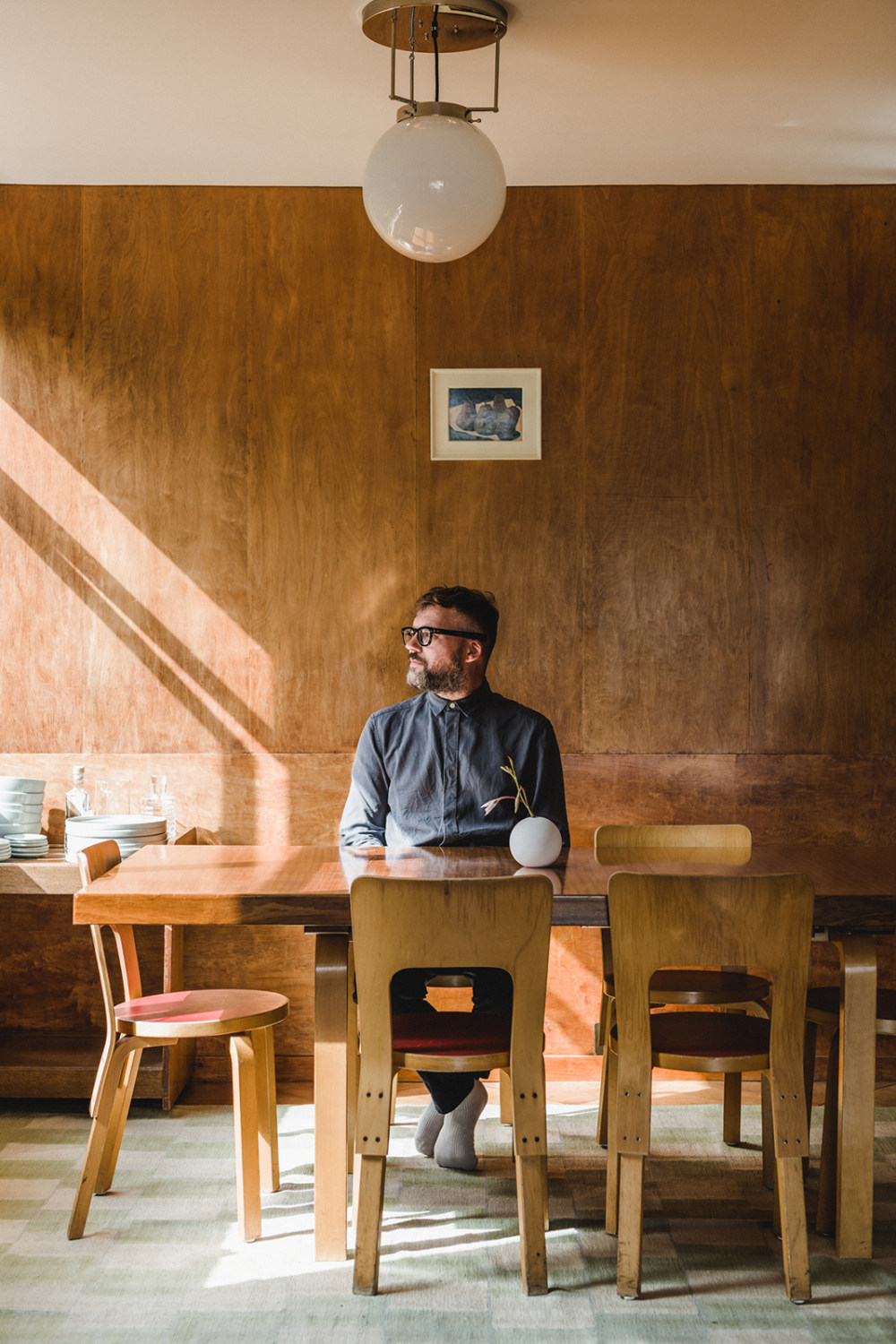
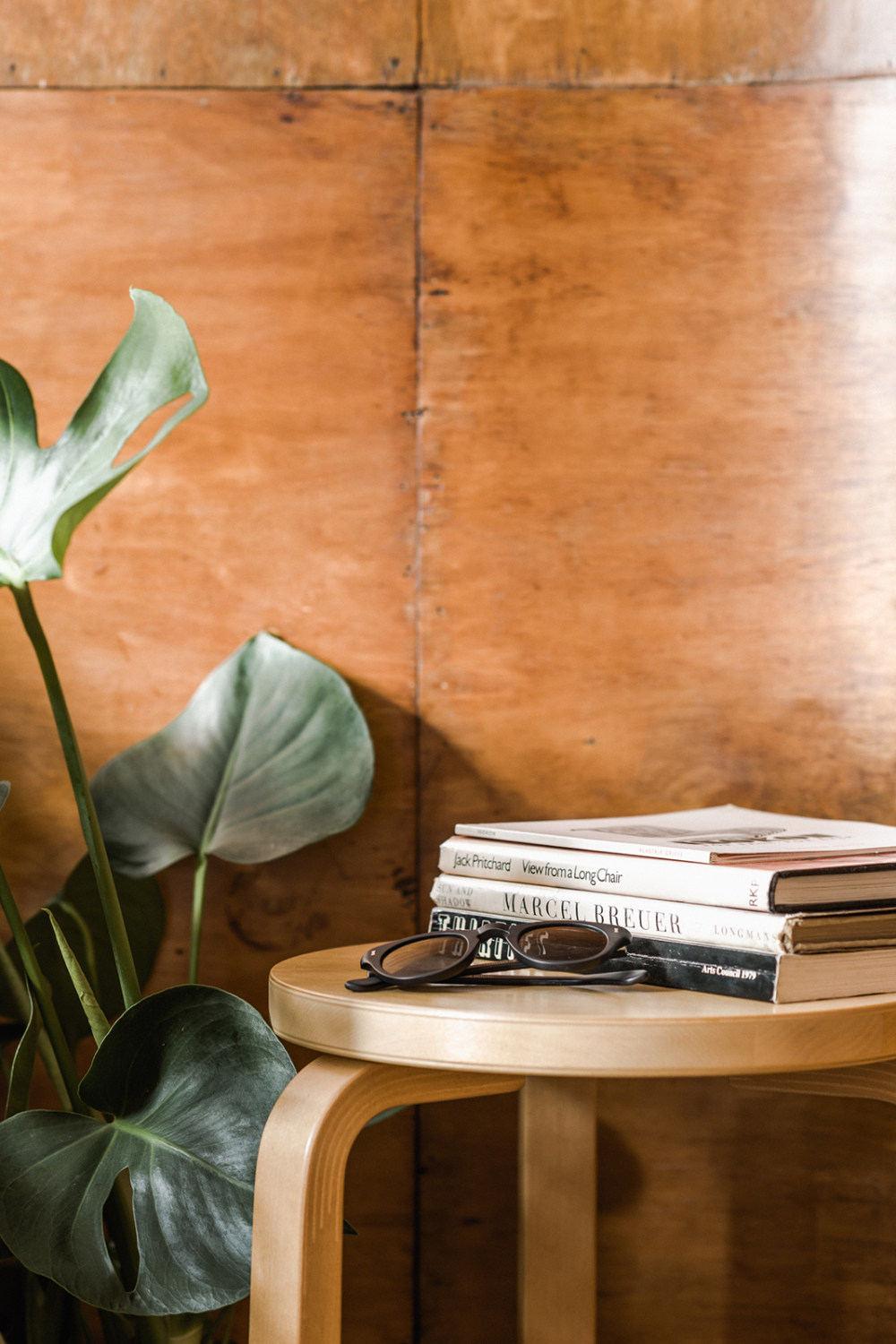
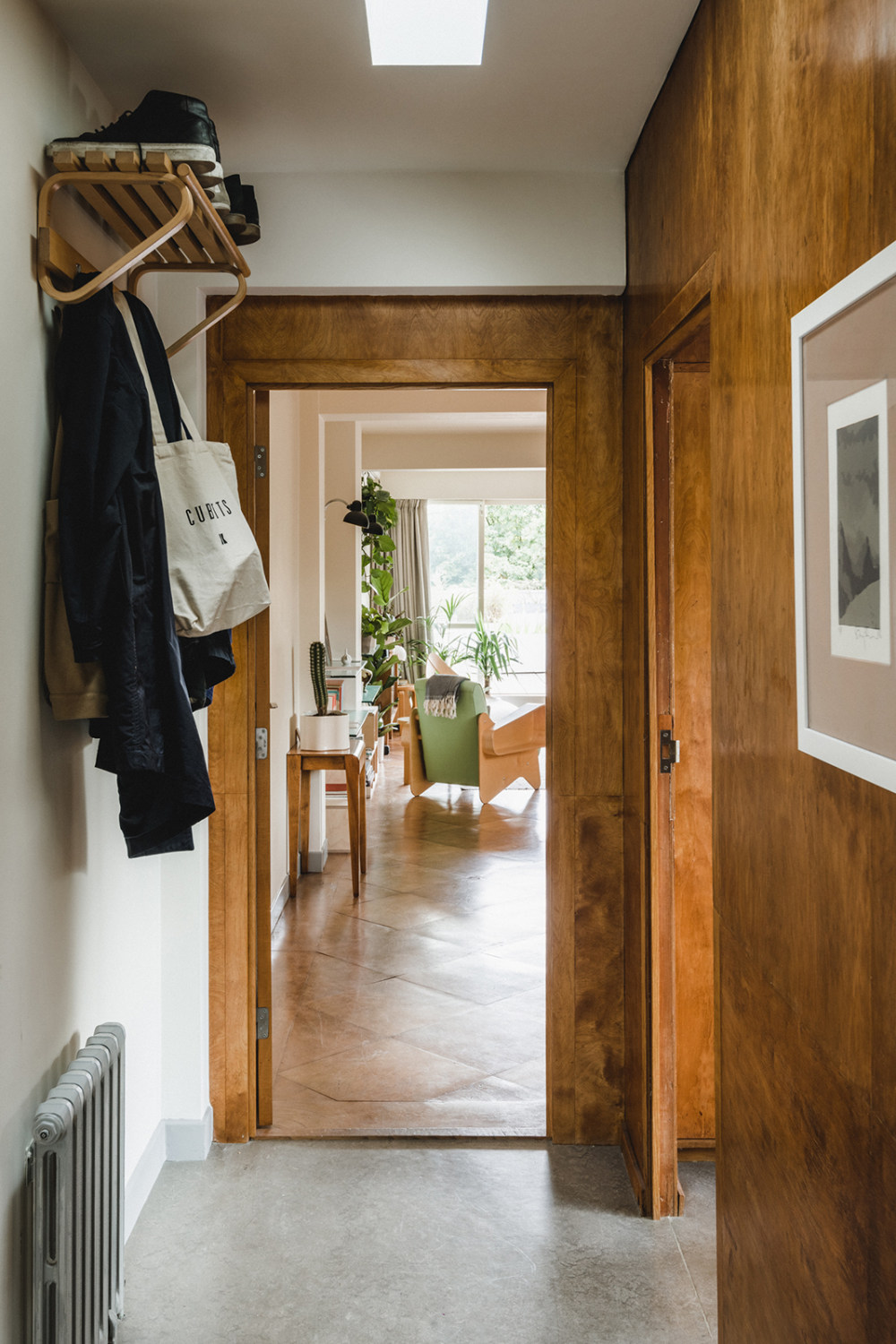

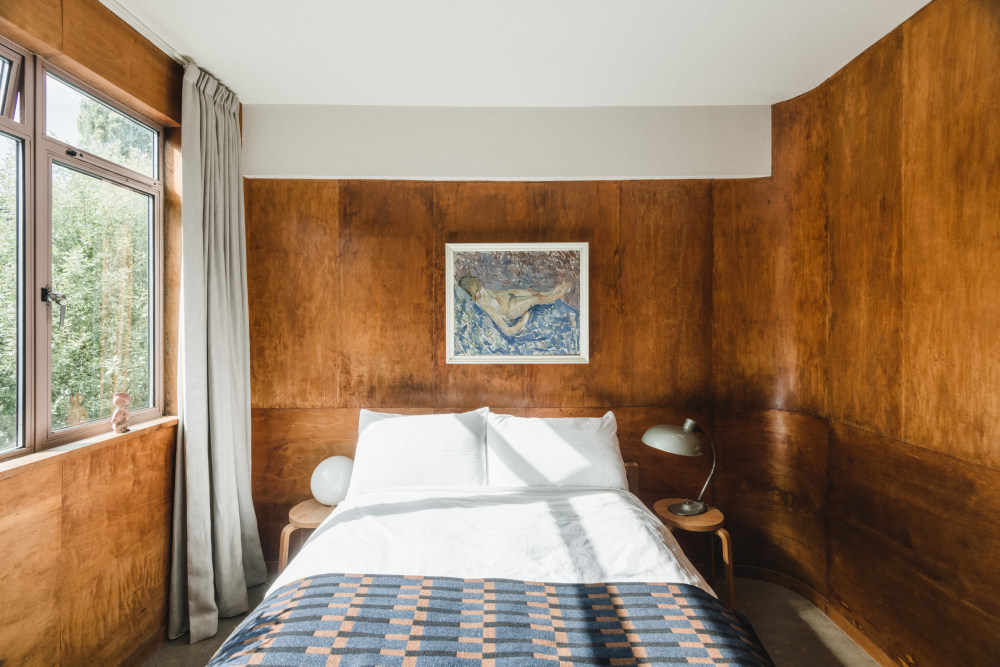
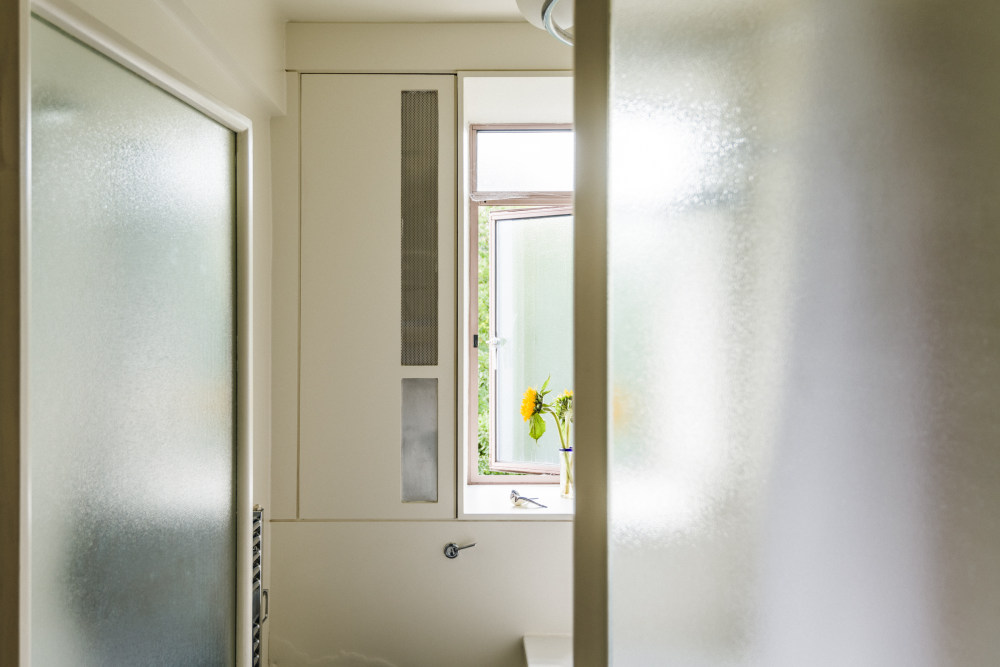
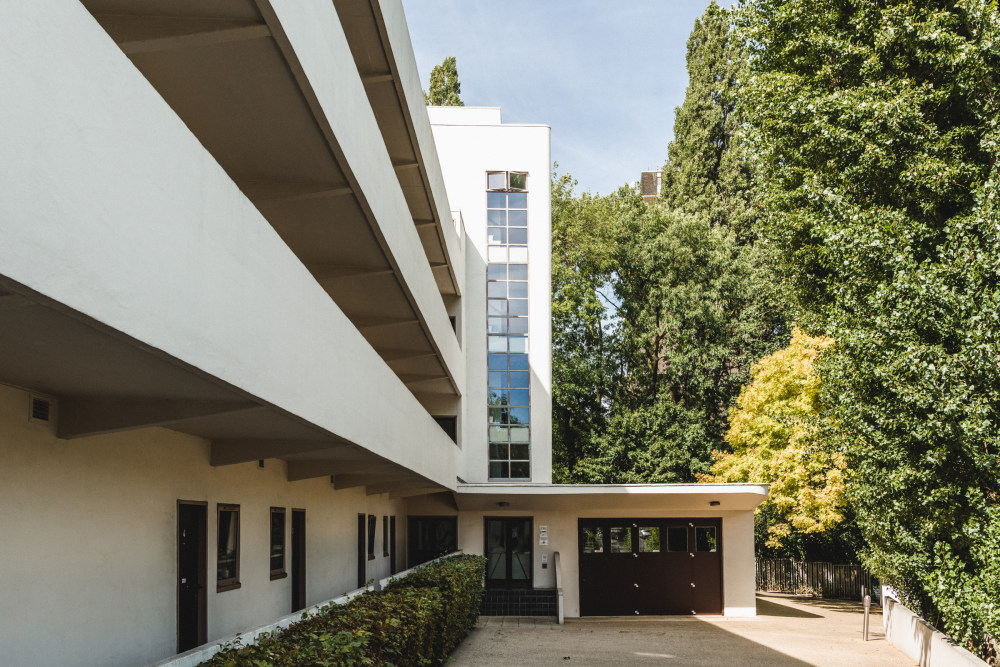

To mark our collaboration with modern spectacle makers Cubitts, with whom we have created a bespoke pair of frames we’re holding a raffle in aid of Maggie’s cancer charity for, we’ve paid a visit to the Isokon Building penthouse, home to Cubitts founder Tom Broughton since 2018, when he bought the apartment via The Modern House. Watch the film here.
The story of the Isokon Building (or Lawn Road Flats) is, in many ways, the story of the beginnings of modernism in London. In 1931, fresh from a research trip to Germany in which they had marvelled at Walter Gropius’ Bauhaus, entrepreneur Jack Pritchard and architect Well Coates, along with Jack’s wife, Molly, established the Isokon company with the intent of offering housing and furniture in the new modernist style they so admired.
By 1934 that intent had found physical realisation in the first reinforced concrete block to be built in the UK, the Isokon Building. With its compact layouts, full-service offering (meals were delivered via a dumb waiter and residents laundry was taken care of) and explicitly ‘minimal’ furnishings, the flats offered a radical new approach to modern living, prompting architecture critic J.M. Richards to refer to the development as “more like the machine-à-habiter than anything Le Corbusier ever designed”.
And, while the flats were an achievement of the nascent modernist movement in their own right, their status as ground zero for a new wave of forward-looking designers, architects and artists was cemented when the Bauhaus professors Gropius, Marcel Breuer and László Moholy-Nagy, fleeing Nazi Germany, arrived at the invitation of the Pritchard’s. In fact, it was the Pritchard’s knack for bringing together a list of people that included Le Corbusier, Charlotte Perriand, Alvar Aalto, Maxwell Fry, Henry Moore, Agatha Christie, Ben Nicholson and Barbra Hepworth that came to make the Isokon Building and its much-loved Isobar a significant conduit for the formation and dissemination of ideas that would define the early 20th century.
That legacy has not been lost on Tom, who bought the penthouse (the home of Jack and Molly Pritchard until the mid-1970s) via The Modern House in 2018. In doing so, Tom made-real a fantasy he had had about living in the Isokon Building ever since he first came to London, when, after coming across it on a walk near Hampstead Heath back when it lay in a derelict state of abandonment (before being artfully restored by Avanti Architects in 2004), he set up a Facebook appreciation society for the building.
“I think I was attracted to it because it felt so timeless,” says Tom. “But also, I think, what it represents. So at the time, in the late 20s, early 30s, there was a positive outlook about doing things differently and challenging the status quo and it feels like that was such a rich period of time which produced so much interesting output that is still, I’d argue, as relevant today as its ever been”.
To hear more about the enduring appeal of Britain’s first modernist block of flats, and to get a sense for what life is like in the crowning jewel of the Isokon, its penthouse, watch the film here. And, don’t forget to buy a ticket to our raffle for The Modern House x Cubitts specs, the proceeds for which are going to Maggie’s cancer charity.
- 转载自:The Modern House
- 语言:English
- 阅读原文
|


